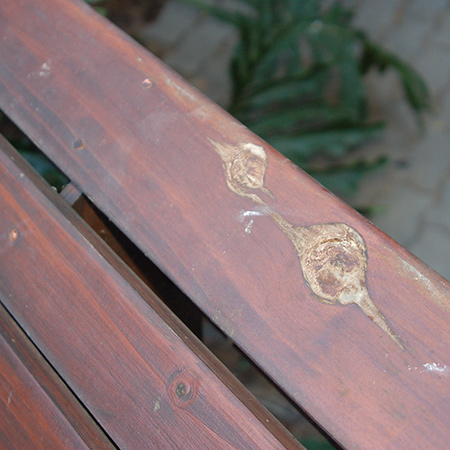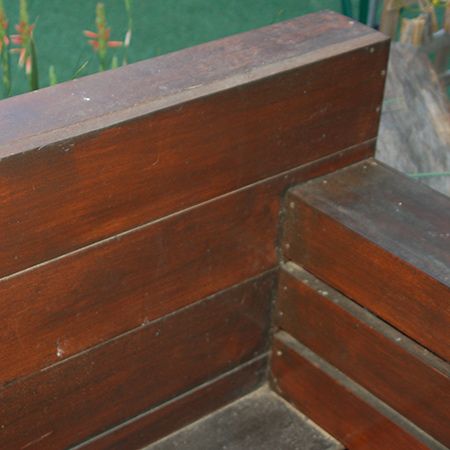Pine or Meranti for outdoor furniture
For the average DIY enthusiast on a limited budget, there really is only two options for wood for outdoor furniture. But which is better, pine or Meranti?
SA Pine
Pine is an easy product to work with for any DIY furniture project, but it has its limitations. Firstly, pine is classed as a softwood and it's easy to cut and easy to sand if there isn't a lot of grain. If there is a lot of grain in the planks, you will find it becomes a little harder to work with and will blunt tools. However, the additional grain does give the wood a lot of strength.
Pine, like any soft- or hardwood, can be stained and sealed, or varnish, to change the look. You can also paint pine for a variety of projects. Note that when painting pine, a suitable wood primer should be able to prevent 'bleed'.
The downside of pine is, that unless sealer is applied on an annual basis, the wood starts to split, knots will fall out, and the planks will bow or warp. But if you are prepared to put in the effort to apply sealer on a regular basis, pine is still one of the most affordable woods for DIY projects.
Meranti
Meranti is a medium-hardwood, which means it's not as soft as pine but not classed as a hardwood. This has its advantages for the home DIY enthusiasts. Meranti does have a blunting effect on tools, but it is generally easy to cut and sand in comparison to other hardwoods and can be stained and sealed in a variety of colours and tints. However, bear in mind that Meranti has open grain, and you may need to use a Sanding Primer when painting.
White Meranti is around twice the price of pine, but it is also far more durable for outdoor furniture projects and can be used as a substitute for most locally available hardwoods. Meranti also requires the regular application of a maintenance product, such as a sealer, but can go for much longer between applications. The wood is less resistant to bowing and warping and has no knots.
Click here for a list of Timber Merchants in South Africa.






